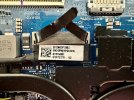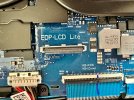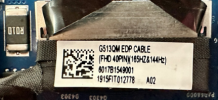Asus Rog Strix G513QR - MB98Q
Client brought me a laptop with a broke LCD from dropping it that also has issue issues with shutting down during heavy workloads. He was using it with an external monitor. He used it overseas, too, with 220 volt electricity. He brought me a new, OEM replacement power adapter.
I replaced the LCD and now it won't turn on at all. I didn't have to take apart the laptop to replace the LCD and I just dealt with one monitor cable.
Did a hard reset (hold down power button for 40+ seconds) and did a hard reset after disconnecting the internal battery.
Not sure what to do at this point. The battery charging indicator LED is on.
Client brought me a laptop with a broke LCD from dropping it that also has issue issues with shutting down during heavy workloads. He was using it with an external monitor. He used it overseas, too, with 220 volt electricity. He brought me a new, OEM replacement power adapter.
I replaced the LCD and now it won't turn on at all. I didn't have to take apart the laptop to replace the LCD and I just dealt with one monitor cable.
Did a hard reset (hold down power button for 40+ seconds) and did a hard reset after disconnecting the internal battery.
Not sure what to do at this point. The battery charging indicator LED is on.



